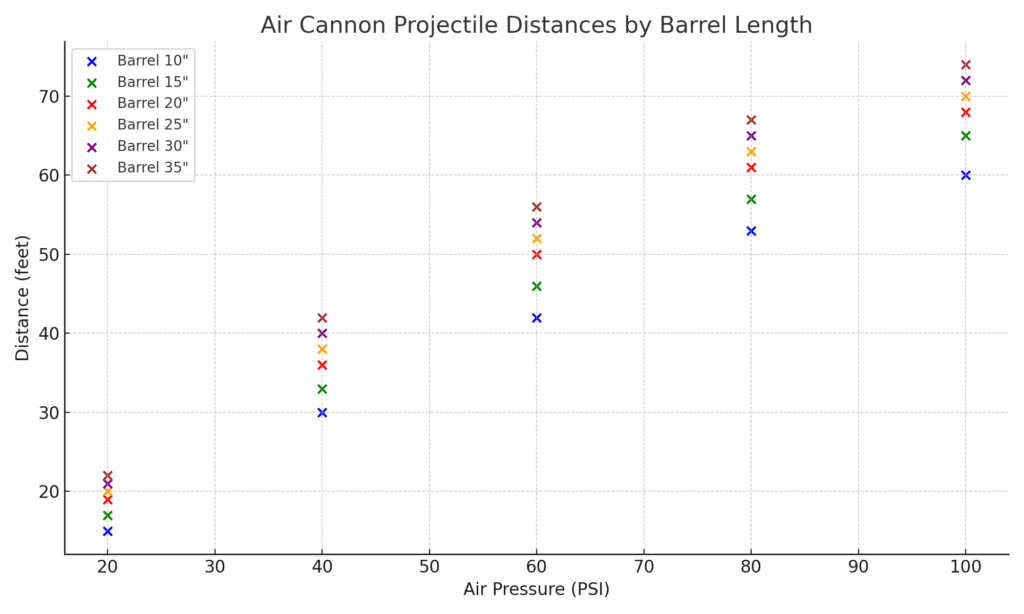Air Cannon Experimentation Variables
Finding the Best Launch Angle
Goal
Test how launch angles affect projectile distance using scientific method, making predictions and collecting data.
Steps
Make Predictions:
- Discuss which angle you think will achieve maximum distance
- Explain your reasoning
Plan Experiment:
- Select specific angles to test (low/medium/high)
- Determine number of trials per angle
- Keep all other variables constant
Collect Data:
- Measure angles precisely
- Record distances in your data table
- Complete multiple trials for reliability
Reflect: Compare results to your initial prediction and explain why angle affects distance
Use this sheet to collect your data
Projectile Properties & Data Visualization
Purpose
Test how different projectiles affect flight performance and learn to create graphs that reveal patterns in your collected data.
Activity Steps
Select Test Projectiles:
- Brainstorm safe, cannon-compatible alternatives to the foam ball
- Choose 1-2 different projectiles for comparative testing
Design Fair Experiments:
- Maintain consistent variables (same pressure and angle) for valid comparisons
- Record distance measurements for each projectile type
Create Data Visualizations:
- Learn to make a scatter plot using your angle vs. distance data
- Analyze your graph to identify patterns and relationships
Extension: Design your own custom projectiles using simple materials to explore how shape influences flight characteristics.

Video Analysis for Measuring Projectile Speed
Purpose
You’ll use slow-motion video with a measurement grid to calculate your projectile’s velocity, then analyze all collected data to draw meaningful conclusions about your air cannon’s performance.
Activity Steps
Setup the Timing Grid: Position the 1-inch striped backdrop behind your launch area
Record in Slow-Motion: Capture several launches at specific pressure/angle settings
Video Analysis:
- Measure distance traveled (in grid stripes/inches)
- Count frames it takes to travel that distance
- Note your phone’s slow-motion frame rate (fps)
Calculate Velocity: Average Velocity = Distance Traveled ÷ Time Elapsed Time Elapsed = Number of Frames ÷ Slow-Motion FPS
Analyze All Data:
- Examine relationships between pressure, barrel length, angle, projectile type, distance, and velocity
- Identify which factors most significantly impact performance
- Consider measurement challenges and their effects on accuracy
- Alternative: use the FizziQ app to calculate the velocity.
Discussion Point
How do scientists and engineers use similar video analysis techniques to study motion in professional settings?
